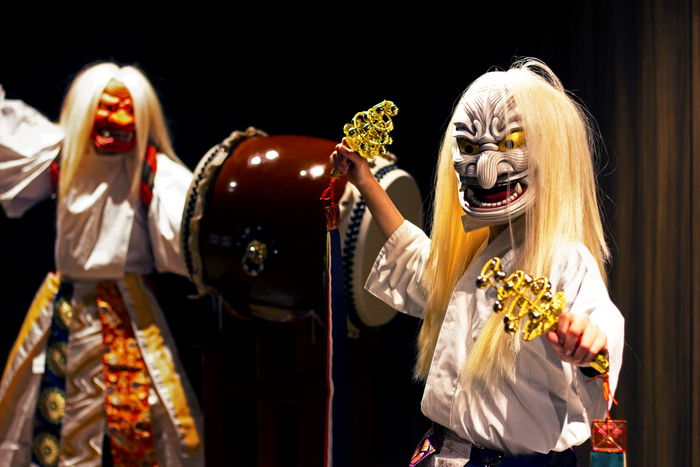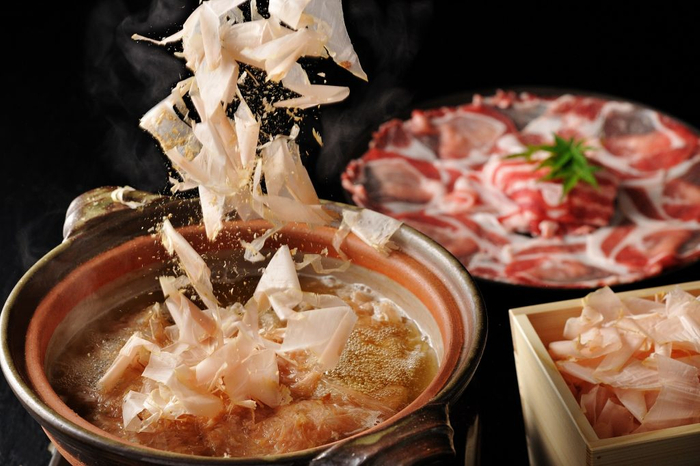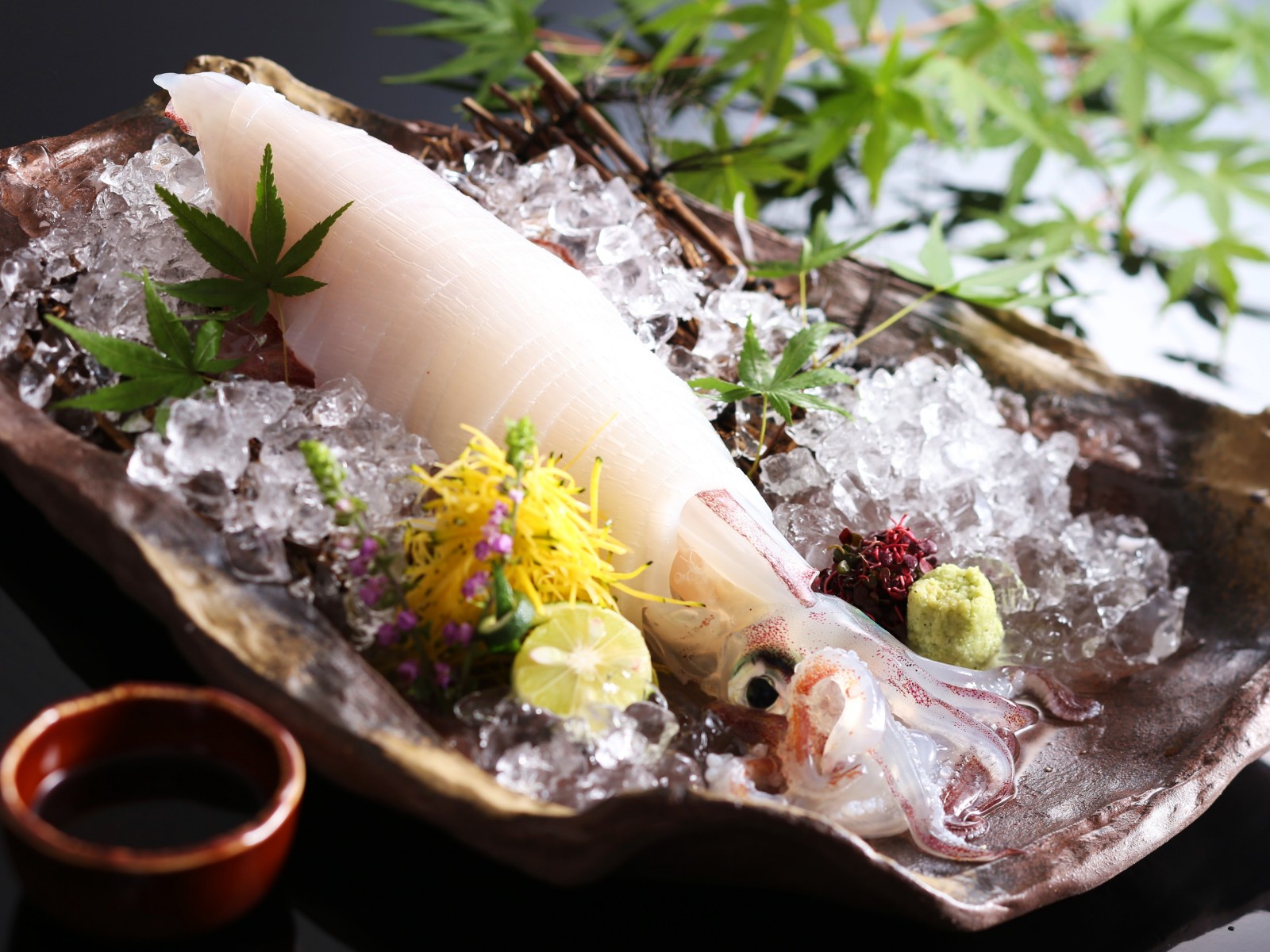The concept is “an inn that overlooks Sakurajima and is moisturized in a bathing hut.”
Located in the middle of Takachiho Mine, where the myth of Tenson Korin remains, this inn overlooks Kinkouwan and Sakurajima, which stretches beyond the Kirishima Plateau. In addition, at the bathing hut in the Susukino field, you can soak in the sulfur spring that springs from Mt. Kirishima and relax both physically and mentally while gazing at the rich nature.
All guest rooms are local rooms “Satsuma Shirasu Daichi no Ma”, and bedboards using traditional crafts of Kagoshima prefecture, Satsuma Washi, Oshima Tsumugi, Satsuma tinware, and Shirasu, a volcanic ejecta peculiar to Kagoshima prefecture. The feature is that it is treated.
Hoshino Resorts hot spring inn brand "Kai"
“Kai” is a hot spring inn brand developed by Hoshino Resorts nationwide. Under the theme of “It’s a royal road, but it’s new.”, We pursue hospitality that meets modern needs while making the most of Japanese taste and tradition. It also features “local music” where you can experience the traditions and culture of the area, and “local room” where you can experience traditional crafts of the area.
About partnership agreement with Kirishima city
On November 1, 2019, Hoshino Resorts signed a “Partnership Agreement” with Kirishima City, Kagoshima Prefecture, regarding the improvement of the environment of Kirishima Kinkowan National Park along with the construction of the inn and the dissemination of its appeal. This agreement stipulates that Kirishima City and Hoshino Resorts will work together to create attractive accommodations that make the most of the natural environment while striving to protect the natural environment.
Kirishima has applied earth tones, lighting, and natural elements to the walls so that the facility can feel that it is in a national park. In addition, the type of planting on the premises is selected so that you can feel a sense of unity with the surrounding nature, and the design makes the best use of the surrounding nature.
Content that allows you to experience the charm of the area
1. Guest room: Local room “Satsuma Shirasu Earth Room”
All 49 guest rooms are local rooms “Satsuma Shirasu Daichi no Ma” that take advantage of the characteristics of the area. From the window on one side, you can enjoy a magnificent view overlooking Sakurajima and Kinko Bay. In addition, you can fully feel the blessings of the earth in Kagoshima Prefecture, such as Kagoshima Prefecture’s traditional crafts “Satsuma Washi, Oshima Tsumugi, Satsuma Tinware” and bedboards using Shirasu, a volcanic ejecta peculiar to Kagoshima Prefecture.
In addition, there is a special room of about 70 square meters, which has only 3 rooms, and there is a space covered with glass on three sides, and you can see the magnificent Mt. Takachiho. In addition, from the spacious guest room open-air bath, you can enjoy the bath while looking out at Sakurajima standing in front of you.



・ Oshima Tsumugi wall decoration
Oshima Tsumugi is one of Japan’s three major textiles (*). In Kagoshima, silkworms have been sericultured for more than 1,800 years, and pongee is produced from raw silk made from cocoons. The wall decorations installed in the guest rooms are made of Oshima Tsumugi, which is a representative of textiles, to express the Kirishima area where mountains are lined up with a natural unevenness, and we have prepared wall decorations that combine traditional materials with new designs.
(*) There are various theories, but Oshima Tsumugi, Yuki Tsumugi, and Ueda Tsumugi.

・ Satsuma Tinware (Suzuki)
It started with the discovery of a tin mine in the Edo period. At that time, tin, which was a high-value metal along with gold and silver, became a major source of revenue for the Satsuma Domain and was treated as a luxury item. It is also used as a sacred and Buddhist instrument and a sake set, and is said to be auspicious because it is a metal that does not rust and decay, and is also popular as a gift. At Kai Kirishima, a vase is displayed at the entrance of the guest room.


・ Satsuma Washi
Satsuma Washi was made as a side business of the poor residents and samurai of the Satsuma domain during the Edo period. Lighting using this Satsuma Japanese paper gives off warm light in the room. By combining it with the lighting fixtures in the room, soft light spreads through Satsuma Washi, creating a production effect that finishes the space elegantly. The design expresses the turtle shell pattern that expresses the flowers, autumn leaves, and longevity auspicious signs that inhabit the Kirishima area. In addition, at the entrance of the guest room, a pattern that feels Japanese tradition on Satsuma Japanese paper and a guest room sign with the motif of the characteristic pattern of the area are installed.



Craftsmen who cooperated in the production
Satsuma Washi Mfg. Co., Ltd .: Keiko Haraguchi

Profile
Japanese paper writer / designer. Raised in Kagoshima prefecture. After graduating from Kagoshima Prefectural Junior College, he studied abroad in Denmark. He learns languages and architectural design. He studied Japanese paper from 2011 and became independent in 2014. Established “Satsuma Washi Seisakusho” in 2018.
He inherits the tradition of washi and works on new expressions of washi that live in the present age. He conveys the kindness and warmth of washi and challenges the infinite possibilities of washi such as detailed and delicate expressions. Currently, he is expanding his activities to the world, including Japan, exhibiting at Milano Salone (Italy / 2018), New York, and London.
Message
From his childhood, he was interested in design, influenced by his mother who loved manufacturing. After that, he studied abroad in Denmark and was influenced by the warm space created by local artists with the design and lighting arranged in the area. At the same time, he felt he was still unaware of his hometown of Japan and Kagoshima. After returning to Japan, he had the opportunity to revisit Japan and Kagoshima, and when he thought about how to convey the charm of traditional crafts in the region, he met Satsuma Washi.
I started making it because I was attracted to the warm features that gently snuggle up to the viewer’s heart while having a unique and beautiful item. I heard this story while working to convey the appeal of Satsuma Washi not only to Japanese people but also to people around the world. I am happy to be from Kirishima, and at the same time I wanted to take this opportunity to preserve the tradition of Satsuma Washi.
The lighting installed in the guest rooms and various places in the building is made by incorporating the history and culture of the area and what we learned in Denmark into the design while taking advantage of the goodness of Satsuma Washi. The design incorporates the flow of the Amorigawa River, the ears of rice that are associated with the advent of Tenson, the rich nature of Kirishima such as the Hayato people’s mark, historical things, and things related to mythology. We hope that the guests will be able to think about the nature, history, and myths of Kirishima through this work, and feel the warmth and new possibilities of Satsuma Washi.
Silas wall
Shirasu is the accumulation of huge pyroclastic flows generated by the eruption of the Aira caldera in southern Kyushu about 30,000 years ago. Shirasu has few impurities and is characterized by its white color unlike other volcanic ejecta. Shirasu does not contain chemicals and does not deteriorate, so it has an air purifying effect. In addition, it has excellent heat insulation and moisturizing properties, has the effect of reducing carbon dioxide emissions, and is an environmentally friendly substance. In Kirishima, using this shirasu, with the cooperation of “Takachiho Shirasu”, a bedboard with a shirasu wall with the motif of the Kirishima mountain range was placed in the guest room.


2. Local music: “Tenson Korin ENBU” that plays the story of Tenson Korin with a lively dance
“Local music”, one of the hospitality of the world brand, to experience the local culture, will perform “Tenson Korin ENBU”. “Tenson Korin” is a myth that has been handed down from ancient times in Japan, and is said to be the beginning of Japan’s founding and its history, and has been handed down to the land of Kirishima. Ninigi-no-Mikoto, who was ordered to bring light to the ground by Amaterasu Omikami, who controls the heavenly world, descended from Takamagahara and thrust a reverse hook at Takachihomine. (*) The staff will perform a lively dance using Kagura bells and drums in a part of the story of the advent of Tenson.
(*) From the Kirishima City website



3. Hot spring: Bathing hut in Susukino
The bathing hut stands in the Susukino field, which is a slope car from the guest room building. There are two types of baths, an open-air bath where you can take a bath while gazing at the scenery rich in nature, a hot spring that flows directly from the source, and a lukewarm bath that allows you to blend the hot spring ingredients into your skin. Gently soaking in Kirishima’s sulfur spring (pH 5.6) is said to bring clear and bright skin to the skin after bathing.


4. Meals: Seasonal Kaiseki cuisine with local ingredients
At a semi-private dining room where you can keep your private life, you can enjoy kaiseki cuisine that makes use of seasonal ingredients unique to the region, along with vessels such as Satsuma ware and Ryumonji ware, which are traditional crafts of Kagoshima prefecture. Okamochi is a gorgeous “Sakizuki” that uses seasonal Japanese sweets “Akumaki”, which is mainly made in Kagoshima prefecture, and a gorgeous “Treasure sashimi” that combines vinegared foods, Yassun, and fresh sashimi. We offer kaiseki cuisine that makes you feel playful, such as using sakizuki-style vessels.
We will prepare “Kurobuta Shabu-Shabu” for the main kaiseki meal. Black pork, which is a special product of Kagoshima prefecture, is chased with freshly cut bonito flakes and enjoyed with the soup stock that brings out the flavor of the bonito. It is characterized by eating with soup stock without using sauces such as ponzu and sesame sauce. At the end, taste the soba noodles, which are specially made so that the soup stock can easily soak in, along with the bonito stock.



5. Experience: View terrace where you can feel the refreshing breeze
A view terrace in a corner of the guest room where you can feel the refreshing breeze. You can go in and out freely, so you can spend your time freely. The fireplace lights up at sunset, so it’s a good idea to spend some time watching the flames. Also, at night, if you look up from the view terrace, you can see the starry sky.


































































